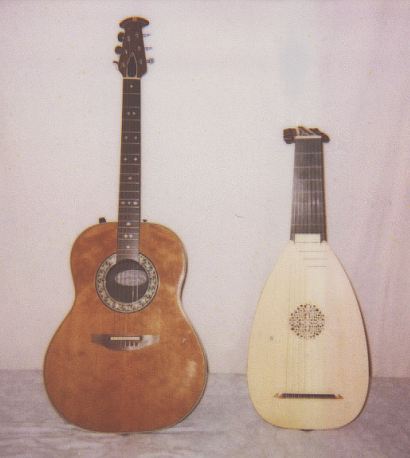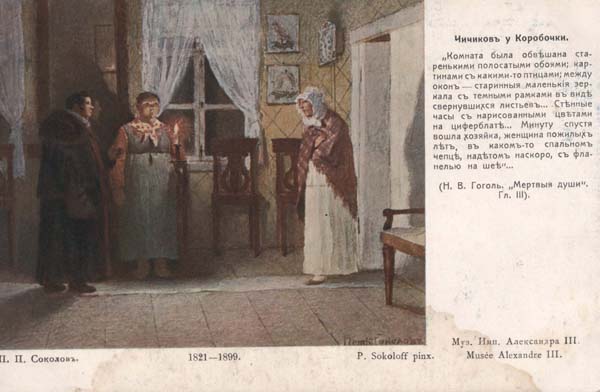|
Balalaika
The balalaika (russian: link=no, балала́йка, ) is a Russian stringed musical instrument with a characteristic triangular wooden, hollow body, fretted neck and three strings. Two strings are usually tuned to the same note and the third string is a perfect fourth higher. The higher-pitched balalaikas are used to play melodies and chords. The instrument generally has a short sustain, necessitating rapid strumming or plucking when it is used to play melodies. Balalaikas are often used for Russian folk music and dancing. The balalaika ''family of instruments'' includes instruments of various sizes, from the highest-pitched to the lowest: the piccolo balalaika, prima balalaika, secunda balalaika, alto balalaika, bass balalaika, and contrabass balalaika. There are balalaika orchestras which consist solely of different balalaikas; these ensembles typically play Classical music that has been arranged for balalaikas. The prima balalaika is the most common; the piccolo is rare. ... [...More Info...] [...Related Items...] OR: [Wikipedia] [Google] [Baidu] |
Russian Traditional Music
Russian folk music specifically deals with the folk music traditions of the ethnic Russian people. Ethnic styles in the modern era The performance and promulgation of ethnic music in Russia has a long tradition. Initially it was intertwined with various forms of art music, however, in the late 19th century it began to take on a life of its own with the rise in popularity of folkloric ensembles, such as the folk choir movement led by Mitrofan Pyatnitsky and the Russian folk instrument movement pioneered by Vasily Andreyev. In Soviet Russia, folk music was categorized as being democratic (of the people) or proletarian (of the working class) as opposed to art music, which was often regarded as being bourgeois. After the revolution, along with proletarian "mass music" (music for the proletarian masses) it received significant support from the state. In Post World War II Russia, proletarian mass music however lost its appeal, whereas folkloric music continued to have a widespread suppo ... [...More Info...] [...Related Items...] OR: [Wikipedia] [Google] [Baidu] |
Domra
The ''domra'' (Cyrillic: до́мра, ) is a long-necked Belarusian, Russian, and Ukrainian folk string instrument of the lute family with a round body and three or four metal strings. History The first known mention of domra is in ''Admonitions of Metropolitan Daniel'' (1530). This musical instument gained great popularity in the 16th–17th centuries, replacing gusli. There are numerous mentions of domra in historic documents of this period. In addition, medieval Russian illuminated manuscripts of the Psalter contain images of musicians with necked plucked-string instruments, and some of those miniatures are clearly captioned «depiction of domras». Judging by those images, late medieval Russian domras can be divided into two types: lute-shaped, which had five to six strings, a large body and а pegbox angled back, and tanbur-shaped, which had three to four strings, a small body and a straight pegbox. After the pious Tsar Alexis of Russia issued an edict ordering the per ... [...More Info...] [...Related Items...] OR: [Wikipedia] [Google] [Baidu] |
Plucked String Instrument
Plucked string instruments are a subcategory of string instruments that are played by plucking the strings. Plucking is a way of pulling and releasing the string in such a way as to give it an impulse that causes the string to vibrate. Plucking can be done with either a finger or a plectrum. Most plucked string instruments belong to the lute family (such as guitar, bass guitar, mandolin, banjo, balalaika, sitar, pipa, etc.), which generally consist of a resonating body, and a neck; the strings run along the neck and can be stopped at different pitches. The zither family (including the Qanún/kanun, autoharp, kantele, gusli, kannel, kankles, kokles, koto, guqin, gu zheng and many others) does not have a neck, and the strings are stretched across the soundboard. In the harp family (including the lyre), the strings are perpendicular to the soundboard and do not run across it. The harpsichord does not fit any of these categories but is also a plucked string instrument, as ... [...More Info...] [...Related Items...] OR: [Wikipedia] [Google] [Baidu] |
Siberia
Siberia ( ; rus, Сибирь, r=Sibir', p=sʲɪˈbʲirʲ, a=Ru-Сибирь.ogg) is an extensive geographical region, constituting all of North Asia, from the Ural Mountains in the west to the Pacific Ocean in the east. It has been a part of Russia since the latter half of the 16th century, after the Russians conquered lands east of the Ural Mountains. Siberia is vast and sparsely populated, covering an area of over , but home to merely one-fifth of Russia's population. Novosibirsk, Krasnoyarsk and Omsk are the largest cities in the region. Because Siberia is a geographic and historic region and not a political entity, there is no single precise definition of its territorial borders. Traditionally, Siberia extends eastwards from the Ural Mountains to the Pacific Ocean, and includes most of the drainage basin of the Arctic Ocean. The river Yenisey divides Siberia into two parts, Western and Eastern. Siberia stretches southwards from the Arctic Ocean to the hills of nort ... [...More Info...] [...Related Items...] OR: [Wikipedia] [Google] [Baidu] |
Nikolai Gogol
Nikolai Vasilyevich Gogol; uk, link=no, Мико́ла Васи́льович Го́голь, translit=Mykola Vasyliovych Hohol; (russian: Яновский; uk, Яновський, translit=Yanovskyi) ( – ) was a Russian novelist, short story writer and playwright of Ukrainian origin. Gogol was one of the first to use the technique of the grotesque, in works such as " The Nose", " Viy", " The Overcoat", and " Nevsky Prospekt". These stories, and others such as " Diary of a Madman", have also been noted for their proto-surrealist qualities. According to Viktor Shklovsky, Gogol's strange style of writing resembles the "ostranenie" technique of defamiliarization. His early works, such as '' Evenings on a Farm Near Dikanka'', were influenced by his Ukrainian upbringing, Ukrainian culture and folklore. His later writing satirised political corruption in the Russian Empire ('' The Government Inspector'', '' Dead Souls''). The novel '' Taras Bulba'' (1835), the play ... [...More Info...] [...Related Items...] OR: [Wikipedia] [Google] [Baidu] |
Dead Souls
''Dead Souls'' (russian: «Мёртвые души», ''Mjórtvyje dúshi'') is a novel by Nikolai Gogol, first published in 1842, and widely regarded as an exemplar of 19th-century Russian literature. The novel chronicles the travels and adventures of Pavel Ivanovich Chichikov (Russian: Павел Иванович Чичиков) and the people whom he encounters. These people typify the Russian middle aristocracy of the time. Gogol himself saw his work as an " epic poem in prose", and within the book characterised it as a "novel in verse". Gogol intended the novel to be the first part of a three-volume work, but burned the manuscript of the second part shortly before his death. Although the novel ends in mid-sentence (like Sterne's ''Sentimental Journey''), it is regarded by some as complete in the extant form. Title The original title, as shown on the illustration (cover page), was "The Wanderings of Chichikov, or Dead Souls. ''Poema''", which contracted to merely "Dead Sou ... [...More Info...] [...Related Items...] OR: [Wikipedia] [Google] [Baidu] |
Musical Tuning
In music, there are two common meanings for tuning: * Tuning practice, the act of tuning an instrument or voice. * Tuning systems, the various systems of pitches used to tune an instrument, and their theoretical bases. Tuning practice Tuning is the process of adjusting the pitch of one or many tones from musical instruments to establish typical intervals between these tones. Tuning is usually based on a fixed reference, such as A = 440 Hz. The term "''out of tune''" refers to a pitch/tone that is either too high ( sharp) or too low ( flat) in relation to a given reference pitch. While an instrument might be in tune relative to its own range of notes, it may not be considered 'in tune' if it does not match the chosen reference pitch. Some instruments become 'out of tune' with temperature, humidity, damage, or simply time, and must be readjusted or repaired. Different methods of sound production require different methods of adjustment: * Tuning to a pitch with one's voi ... [...More Info...] [...Related Items...] OR: [Wikipedia] [Google] [Baidu] |
Strings (music)
A string is the vibrating element that produces sound in string instruments such as the guitar, harp, piano ( piano wire), and members of the violin family. Strings are lengths of a flexible material that a musical instrument holds under tension so that they can vibrate freely, but controllably. Strings may be "plain", consisting only of a single material, like steel, nylon, or gut, or wound, having a "core" of one material and an overwinding of another. This is to make the string vibrate at the desired pitch, while maintaining a low profile and sufficient flexibility for playability. The invention of wound strings, such as nylon covered in wound metal, was a crucial step in string instrument technology, because a metal-wound string can produce a lower pitch than a catgut string of similar thickness. This enabled stringed instruments to be made with less thick bass strings. On string instruments that the player plucks or bows directly (e.g., double bass), this enabled i ... [...More Info...] [...Related Items...] OR: [Wikipedia] [Google] [Baidu] |



.jpg)

